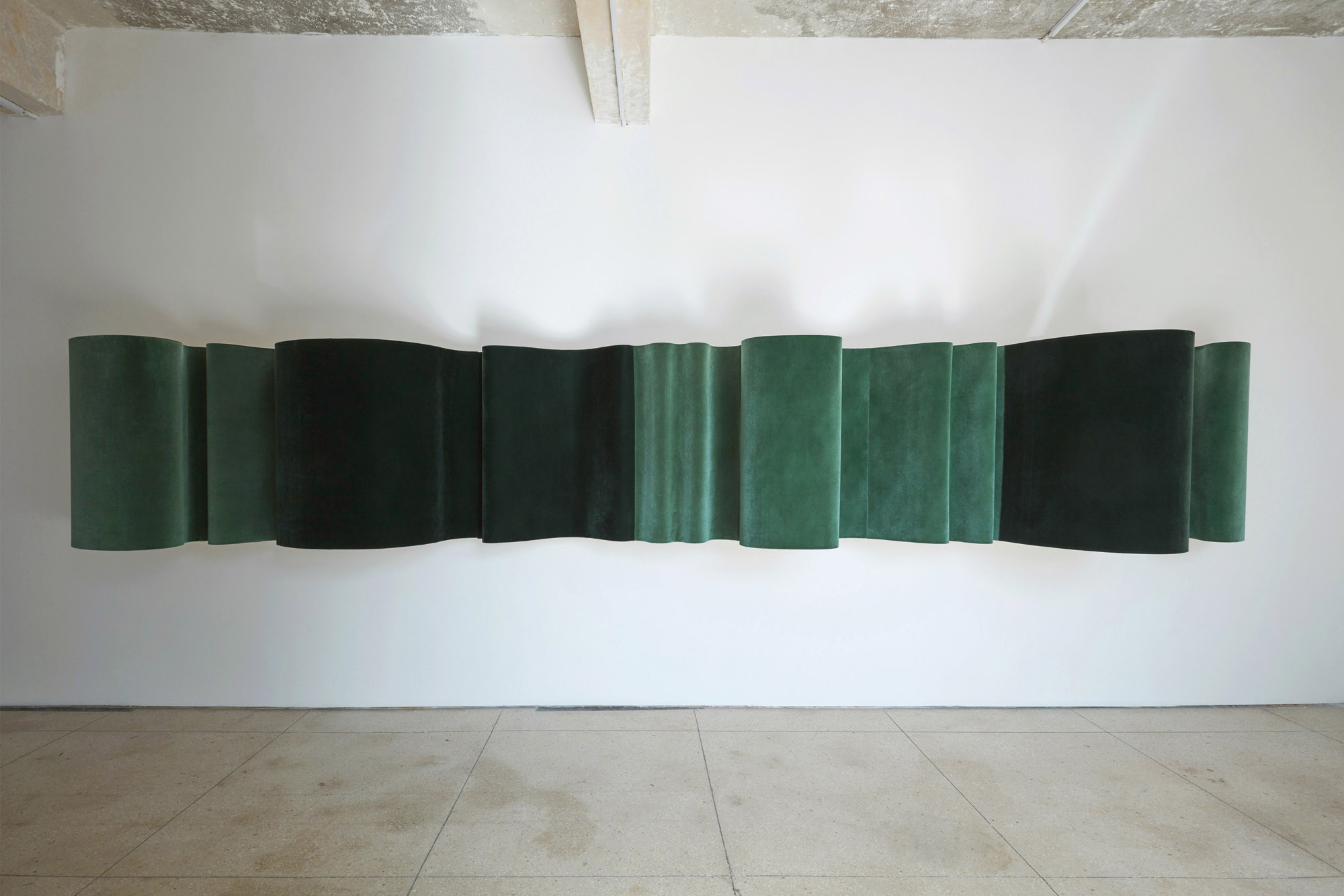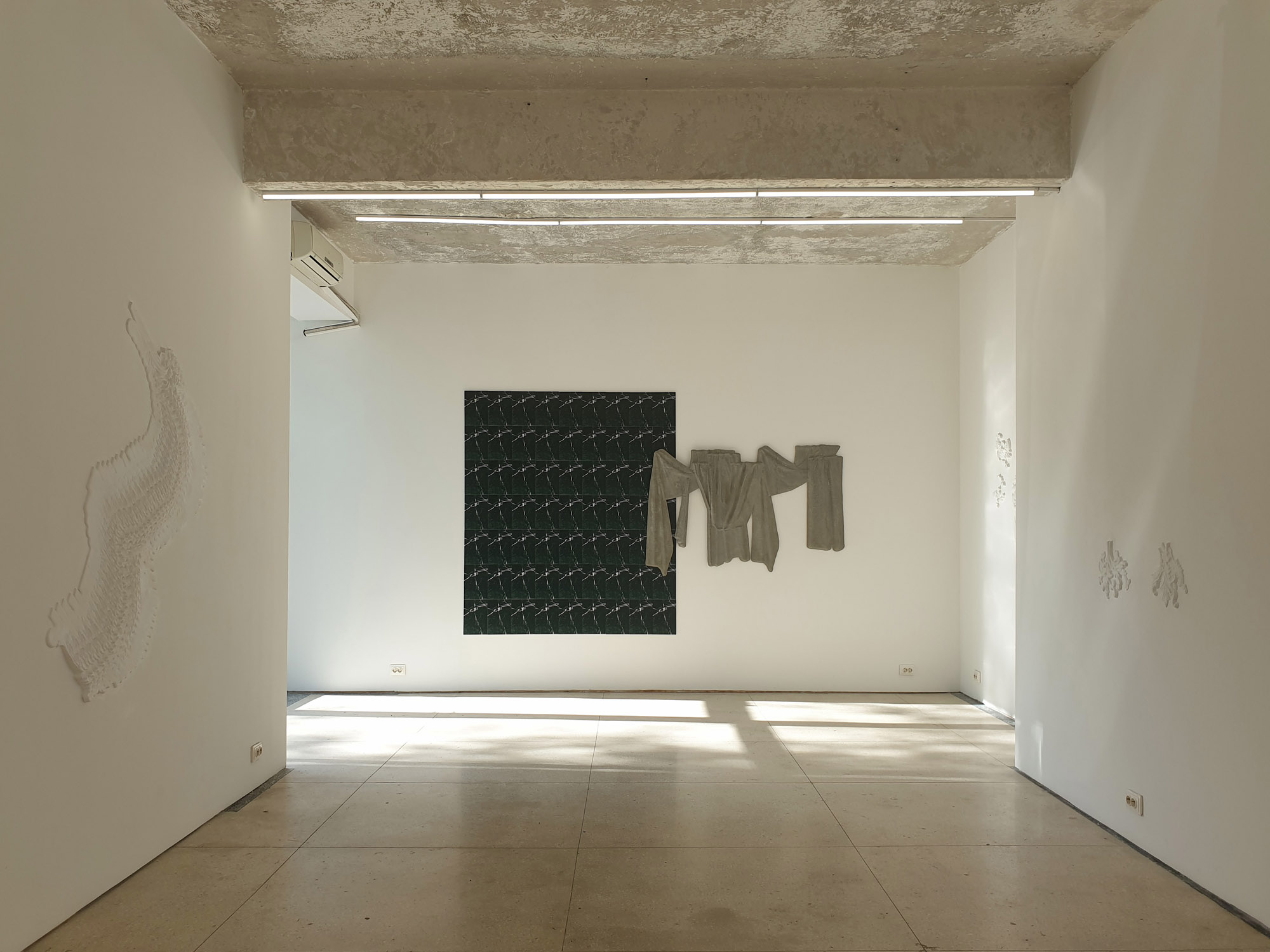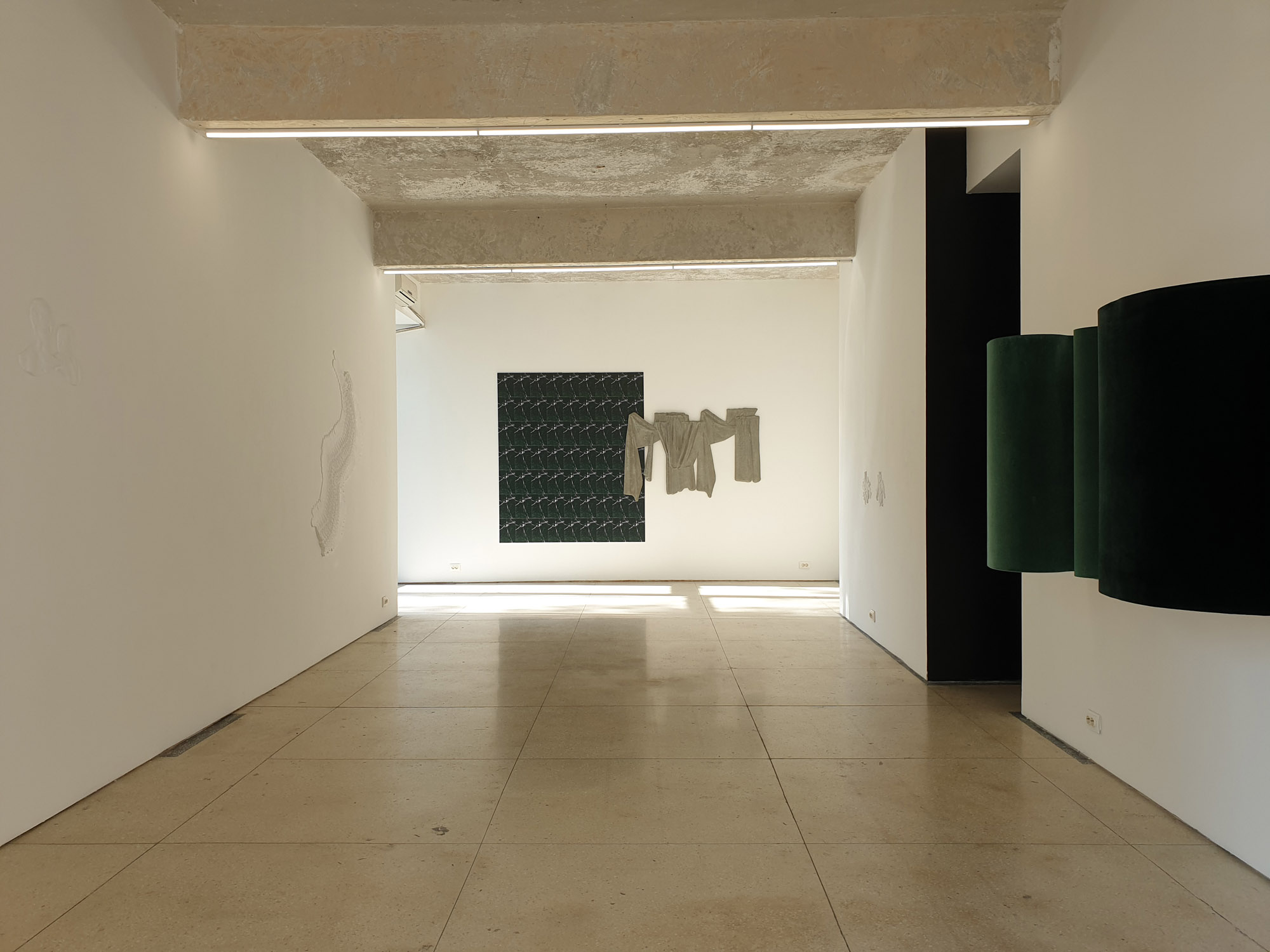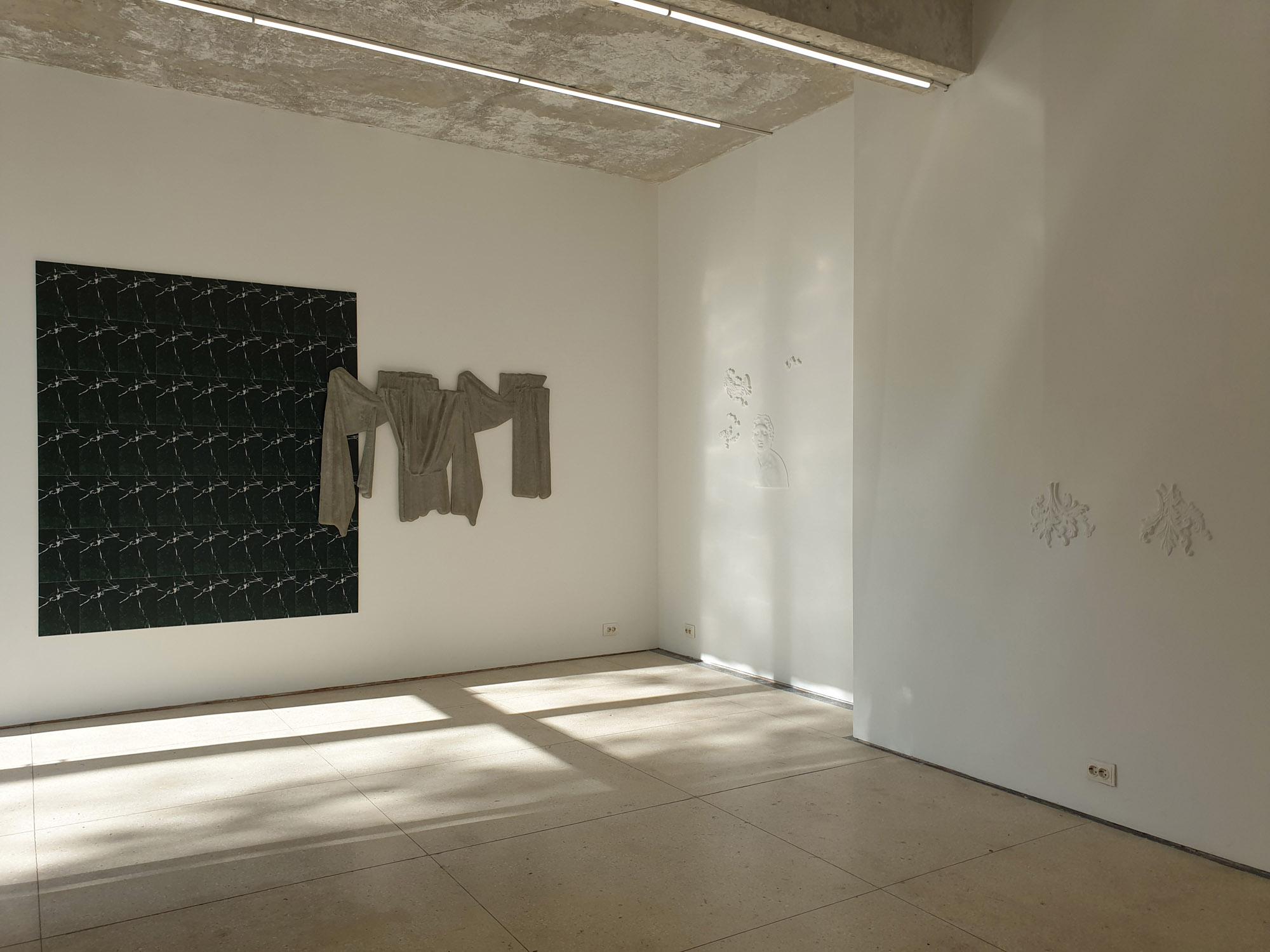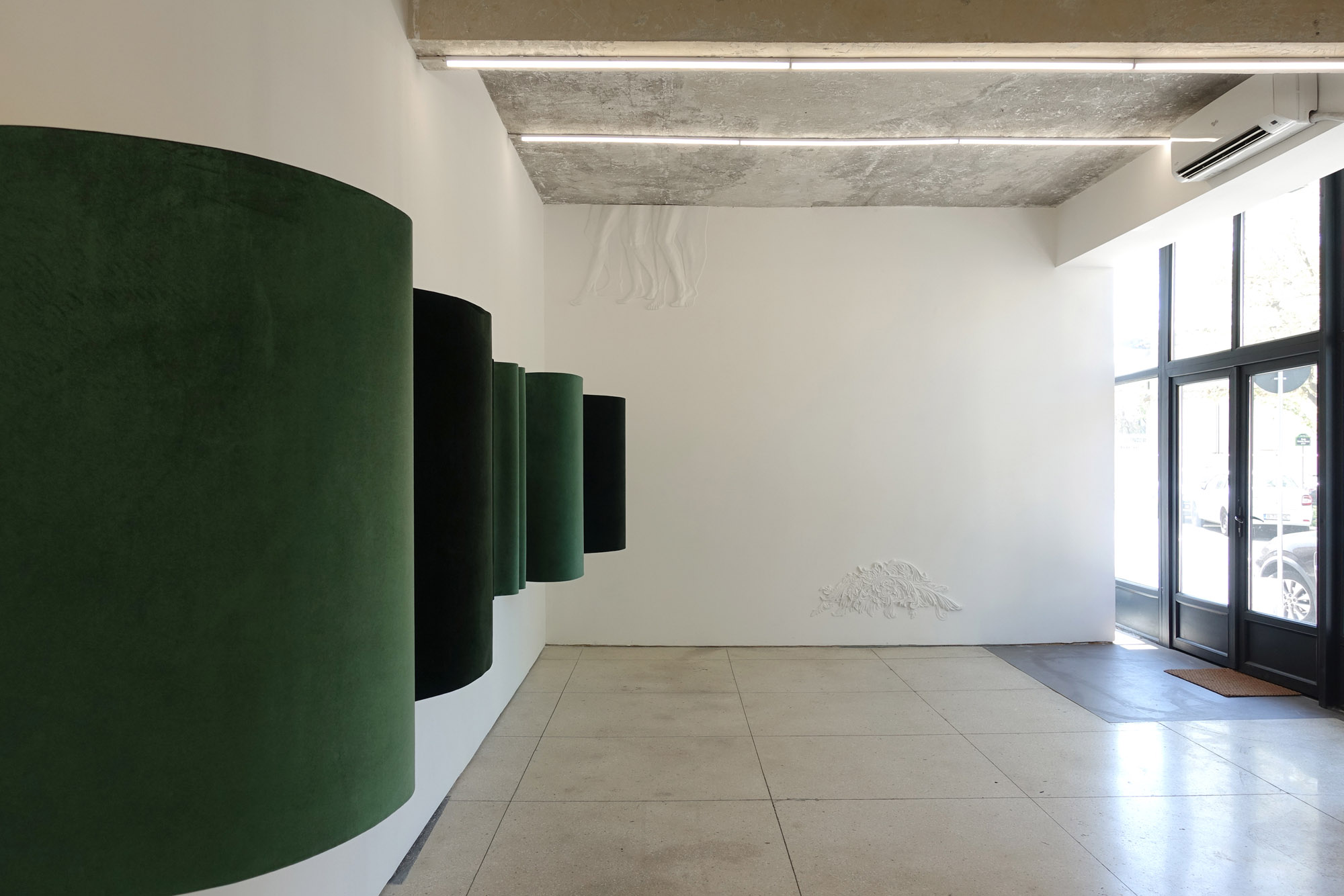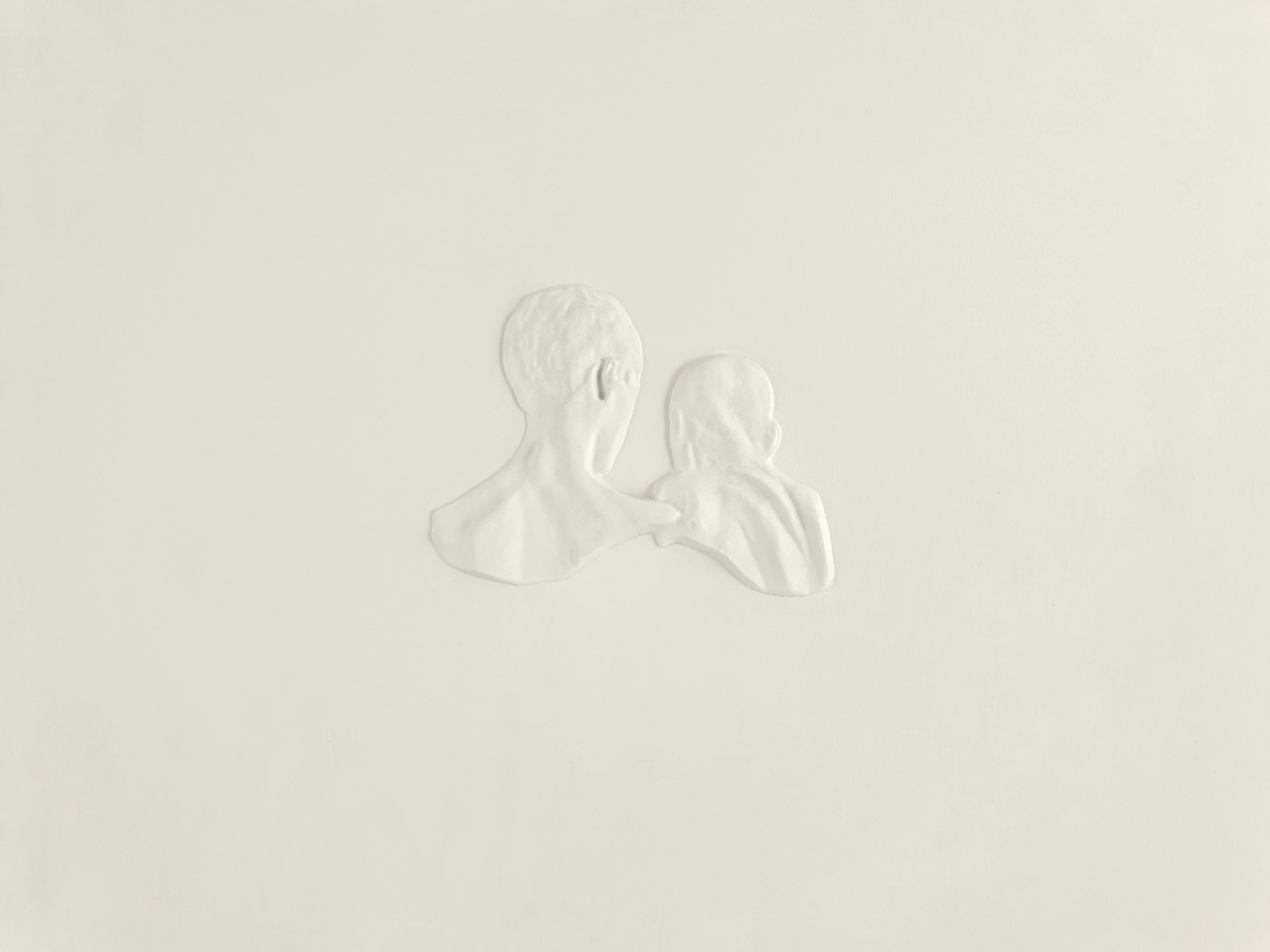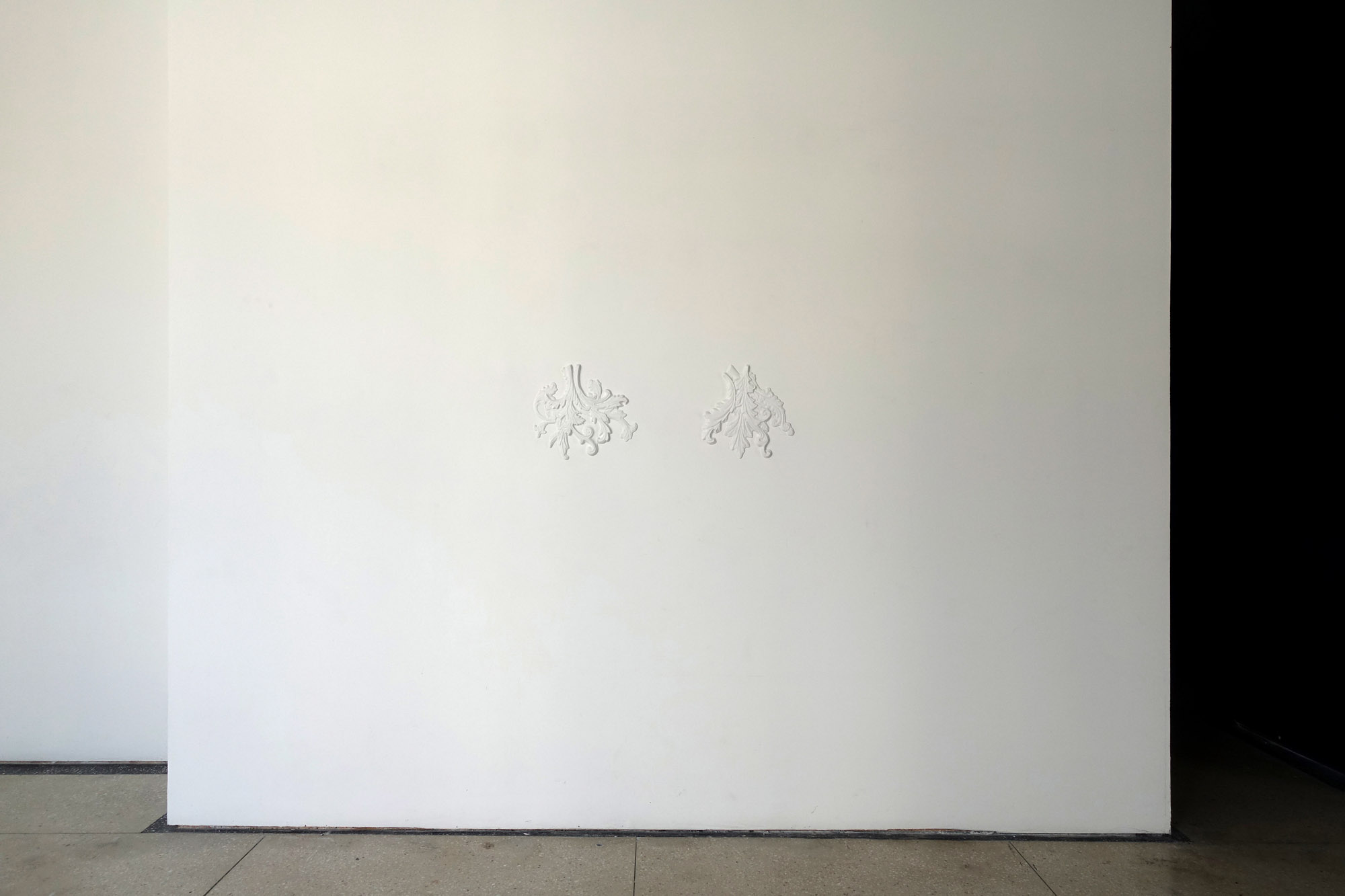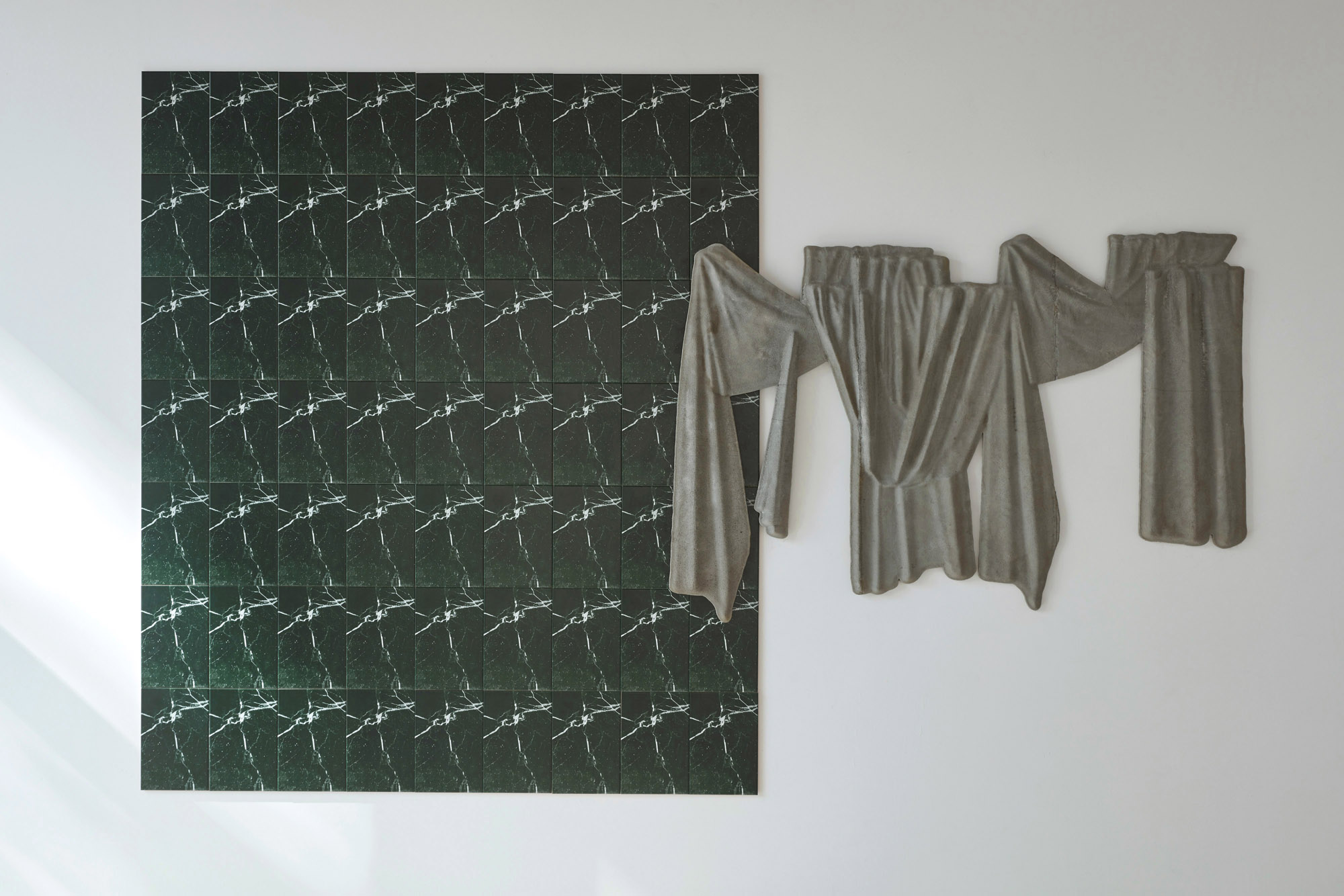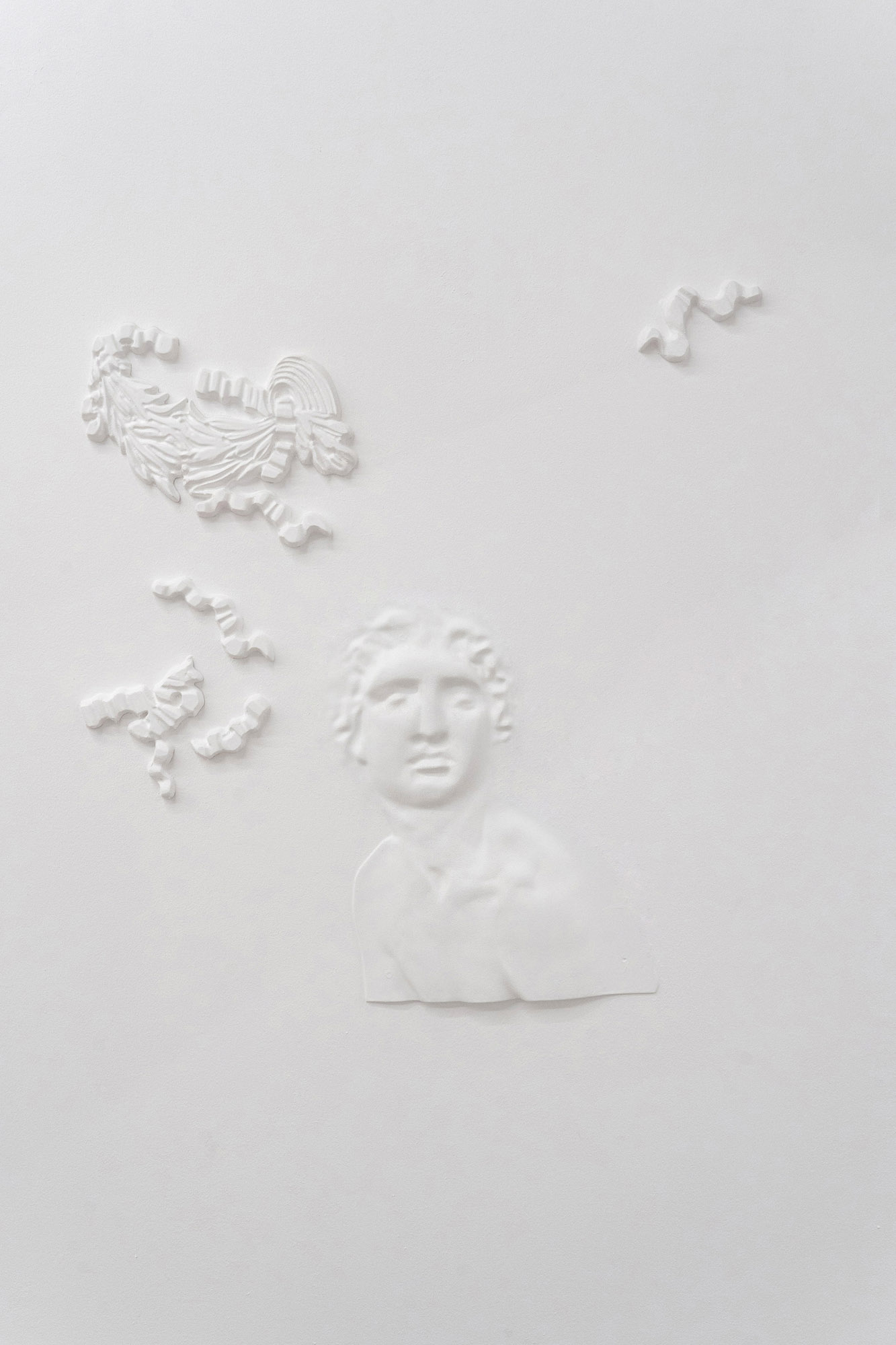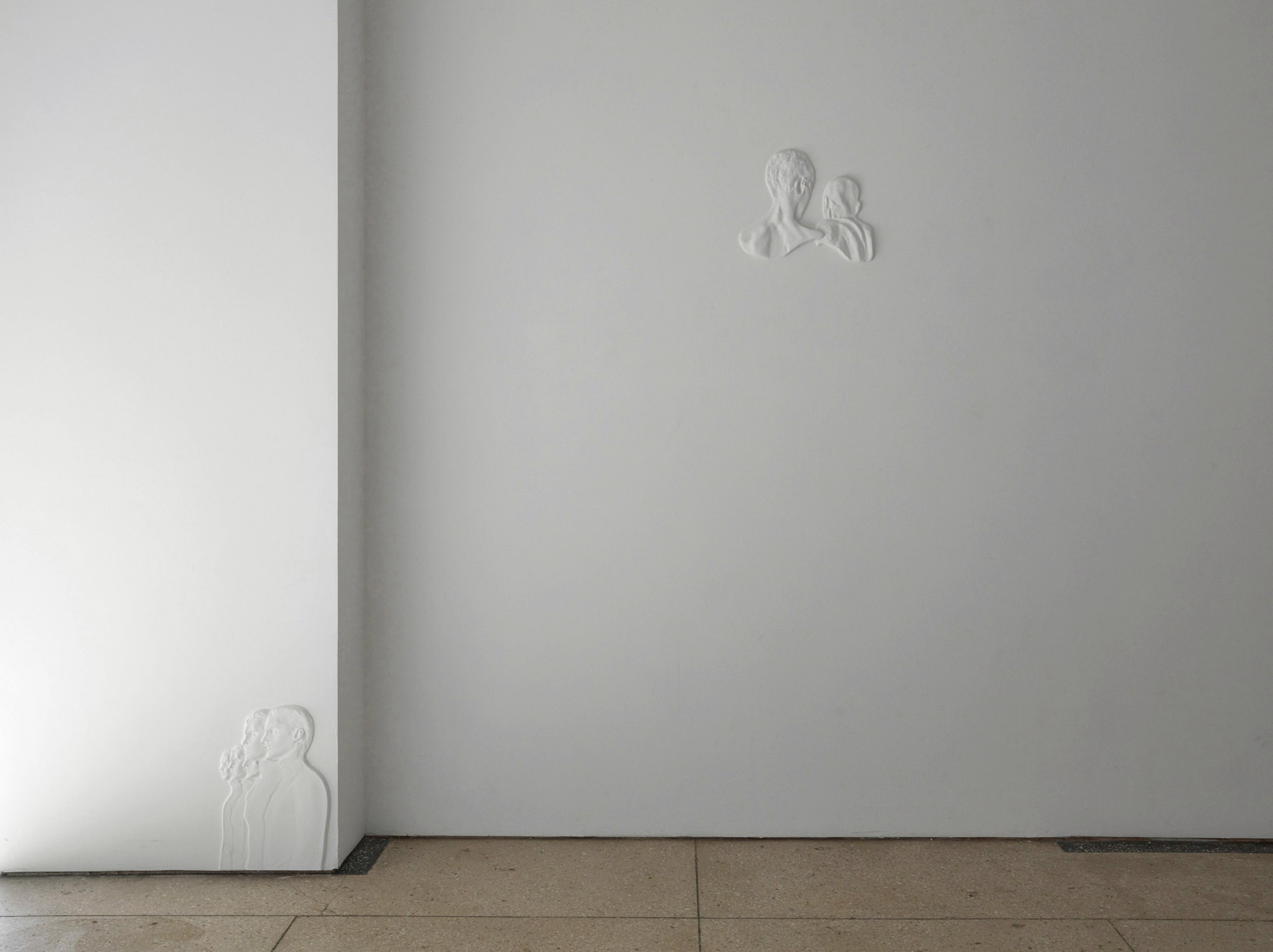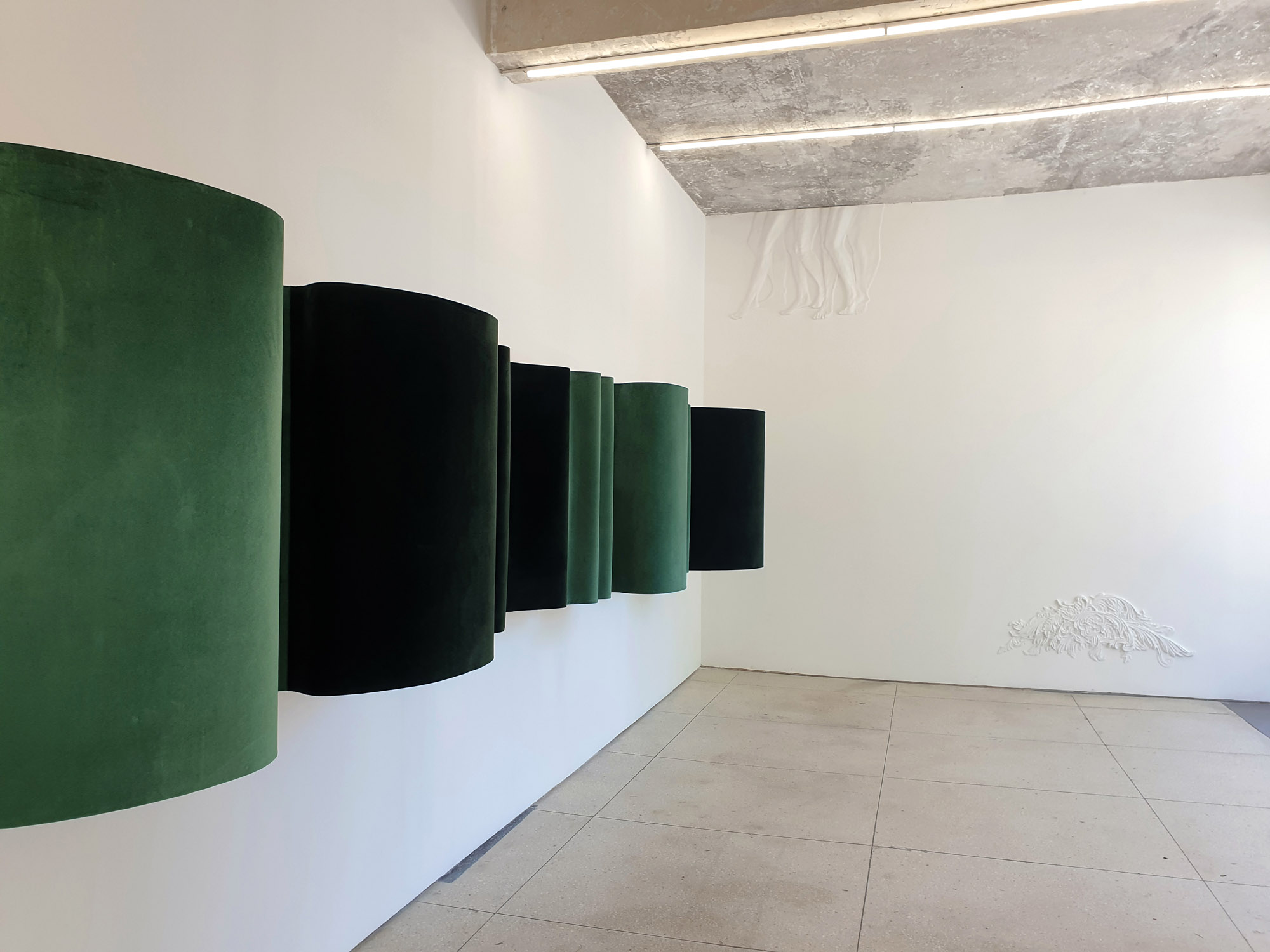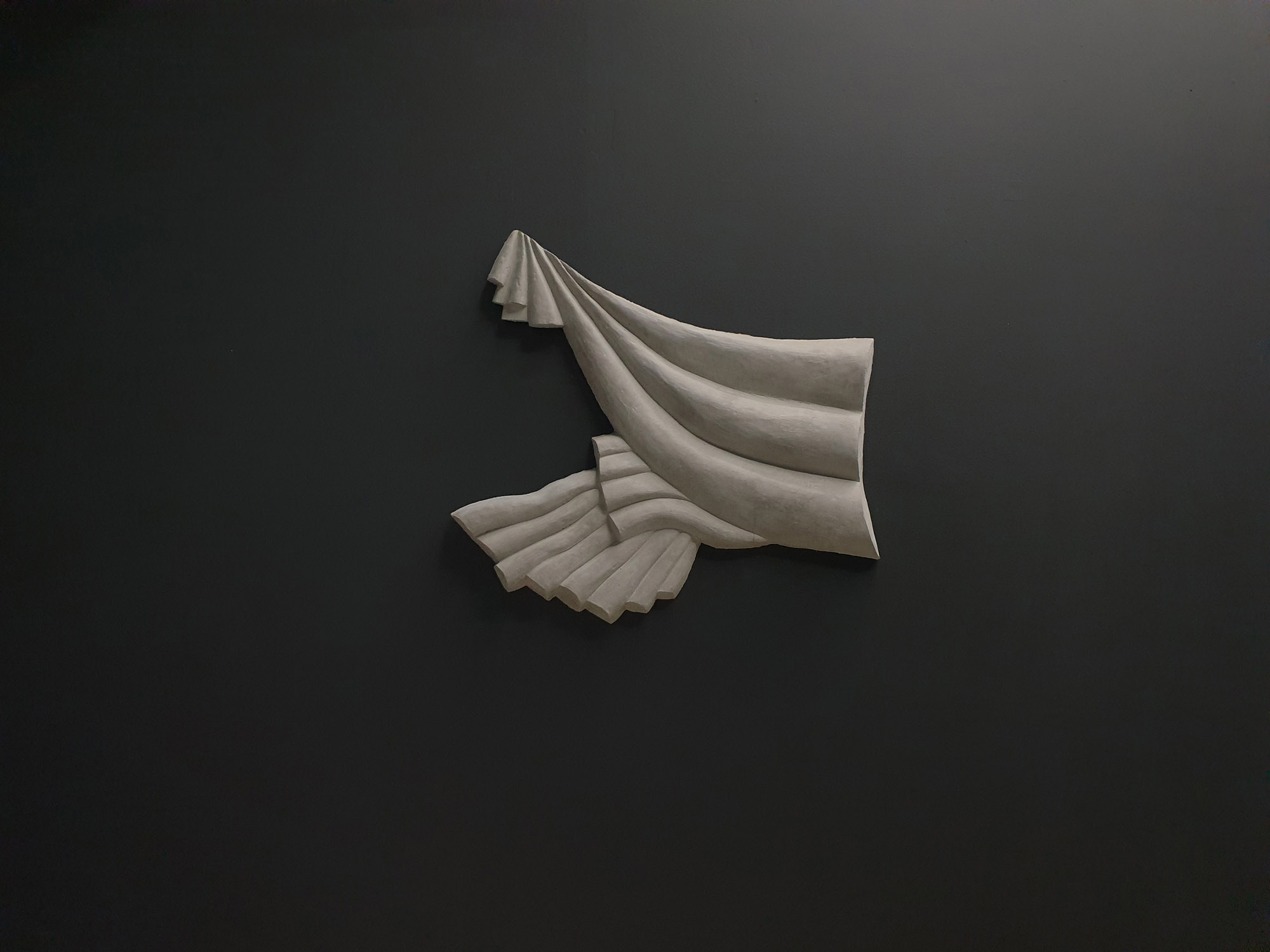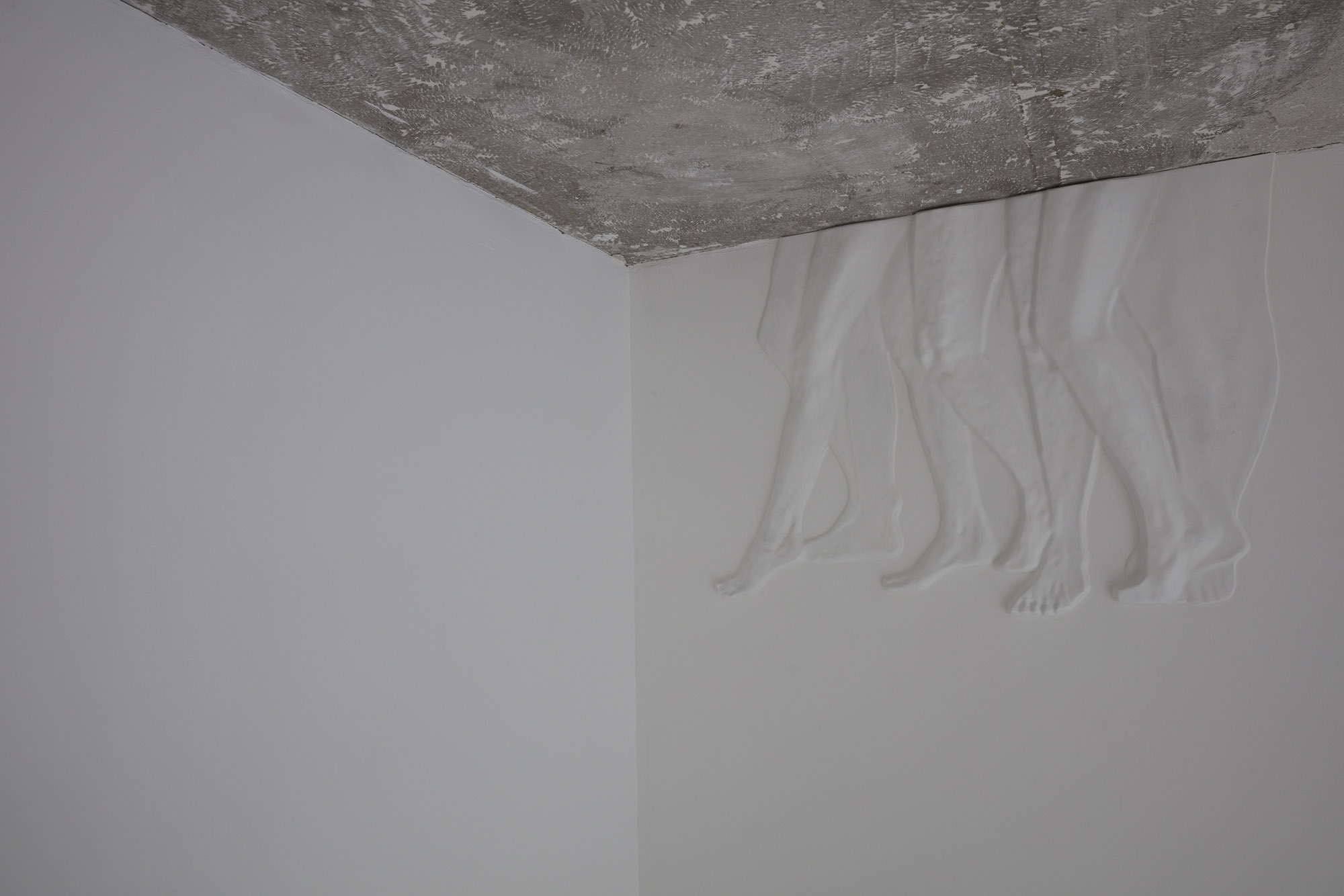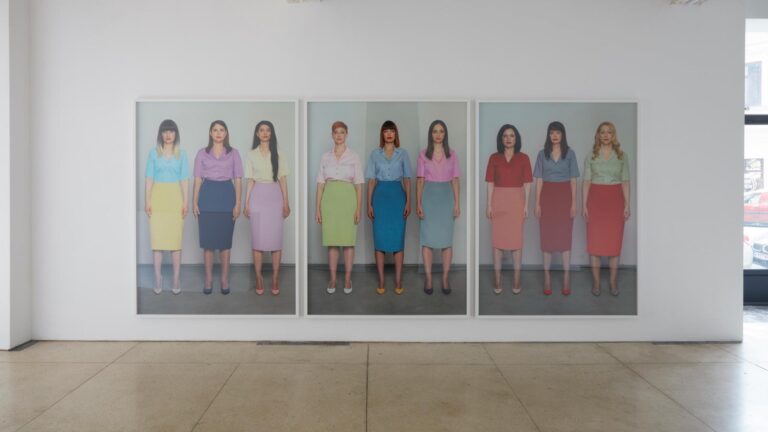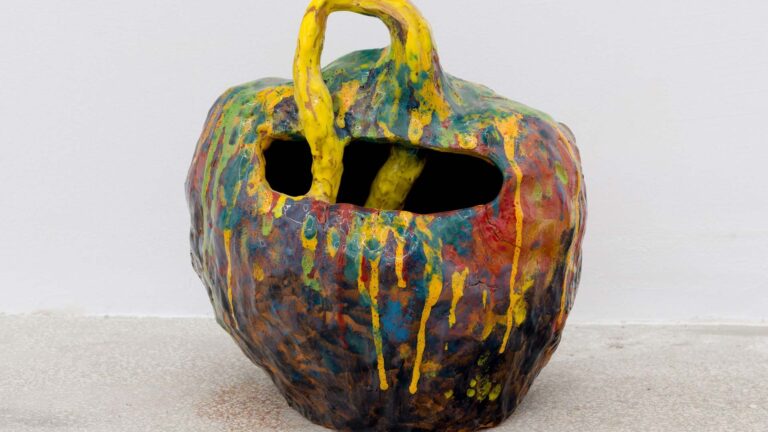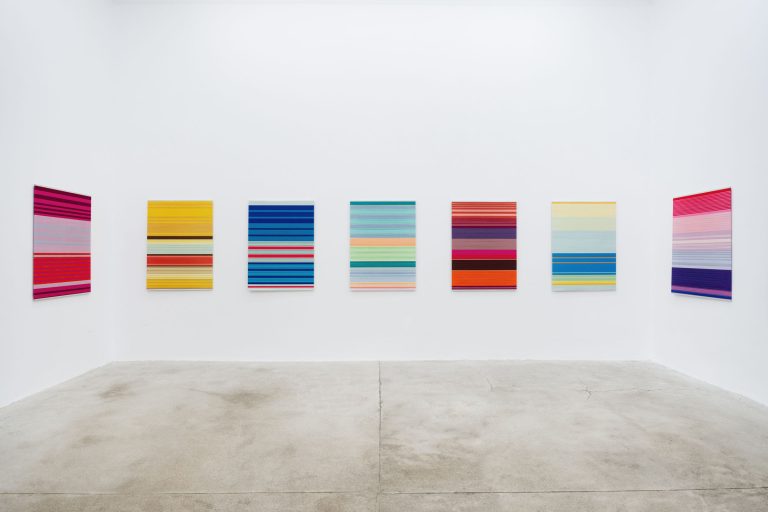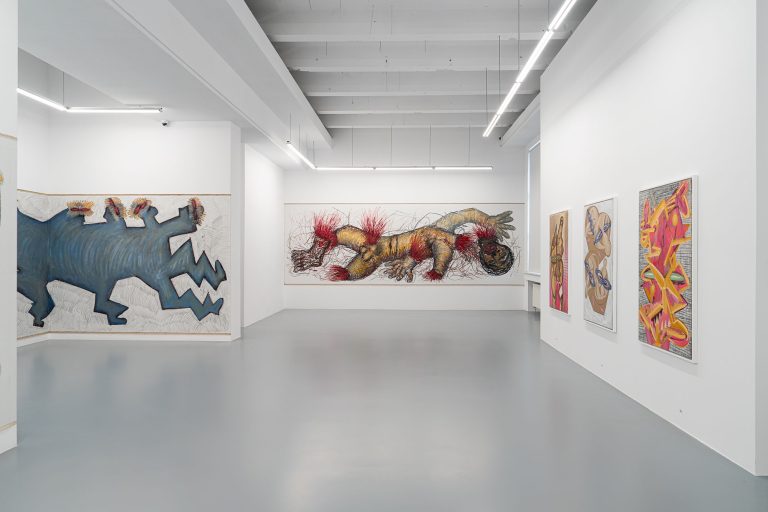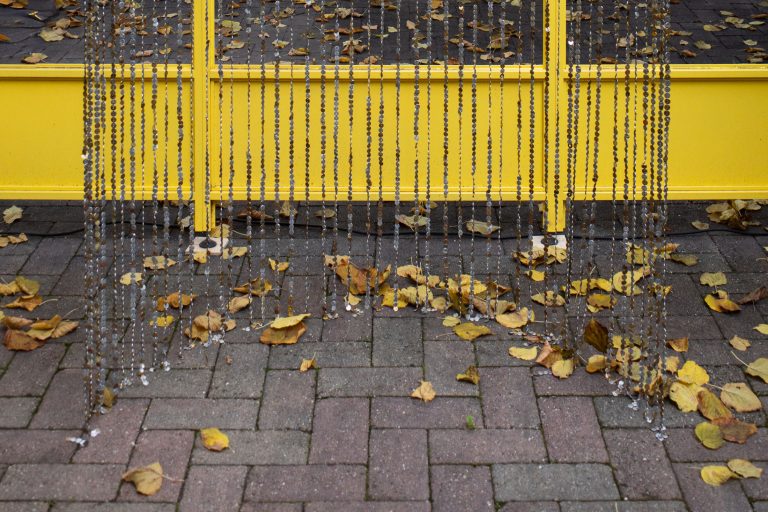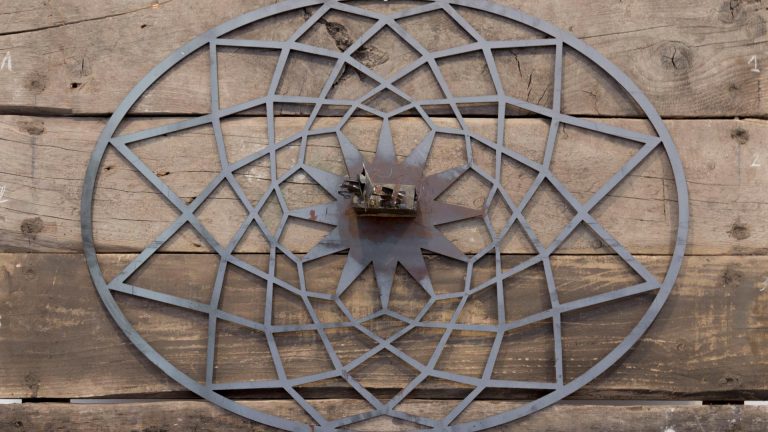Artist: Larisa Sitar
Exhibition title: Robust Boast
Curated by: Tevz Logar
Venue: Suprainfinit, Bucharest, Romania
Date: April 14 – May 14, 2022
Photography: New Folder Studio / Mihaela Vezentan, all images copyright and courtesy of the artist and Suprainfinit, Bucharest
Reflecting on the work of Larisa Sitar, it is impossible not to think in line with artistic practices that have been concentrating on the critical examination of identity and memory, through the exploration of processes that ascribed certain values to society. The artist’s use of various formal approaches and techniques, the frequent blending of technical and digital processes with well-known traditional and analog forms, expand her work between past and contemporaneity, while the content and conceptual approach define it as topical and timely observation of the transformation of social and cultural landscape.
The exhibition Robust Boast encompasses various sculptural forms created in the last three years, which identify prevailing relations between classical architecture ornamentation and how these relations were appropriated during the transition that was happening in the countries of Central and Eastern European region along with the change of socio-political panorama in the 1990s. This period reshaped the world in many ways and the commodification process of classical decoration is one of them that “silently” echoed the new reality of everyday life in many homes. Thirty years later, this transformation is still there, very much present within the society and this “temporal arc” should be understood as core and the main conceptual premises of the exhibition that lead the spectator in two directions. The first direction establishes a relationality between two conflicting elements, extracted elements from canonized classical architecture and new architectural idioms of postmodernism which were entering post socialist Europe in the 1990s. Typical working-class households began to merge the unexpected. Ornaments copied from canonized classical architecture, such as columns, carvings of leaves and other natural elements were incorporated in old socialist or new post-socialist buildings. The intention of this process was to refine existing interiors and exteriors through the usage of existing classical architectural canons of beauty and harmony, which would erase the “bitter taste” of the past and anticipate the better future. The second direction takes the spectator in the realm of symbolism and various meanings embodied in the sculptural ensemble in the gallery. In the context of classical architecture, it is speculated that ritualistic tools, remains of offerings, garlands of flowers, spears, darts and ropes have all been recorded in stone for the purpose of preserving their divine status. Furthermore, this work investigates the fact that many of the ancient meanings embodied by such decorations have been diluted or even forgotten. Their original purposes as symbols in ritual sacrifices to the gods is far from our thoughts when the majority of us now look at beautiful Renaissance, Baroque, and Neoclassical buildings. Consequently, Sitar’s sculptures and bas-reliefs demonstrate various adaptations, practices or tastes, and point to the fact that the period of transition created a particular visual narrative within society which positioned itself as a cultural legacy that cannot be overlooked. A thought-provoking element is also the value of these items. If the classical architecture was something that strived to the gods and seemed completely unreachable for most of the society, Sitar’s “echoes of transitional copies” prove the opposite, as the same ornament became highly affordable as a consequence of technological means and accessibility of the material.
In the beginning of twentieth century, modernist architect and theorist Adolf Loos developed his thoughts about architecture, ornament, and its evolution through different cultural contexts in his seminal essay Ornament and Crime. Although his main argument plays against the use of ornament, the closure of the essay can very much relate and advocate Sitar’s dialectical challenge and understanding of the liminal space she plays with. He states that the modern man uses ornaments of earlier cultures as he finds them appropriate, because his new interests are somewhere else. So, what is in the urge that has remade many intimate environments into classically inspired interiors and exteriors full of plaster-coated columns and carvings? In general terms, this broad urban reconstruction was part of the push to purge the country’s past and aspiration to western values through the perspective of canonized beauty. But this urge does not stay on the surface only. If the politics and societies before the 1990s were collectively organized, the transitional period started to “exercise” return to the individual or better said, neoliberal idea, where the individual is conceived as an unattached, self-responsible market participant. In the ideas of classical Hellenic anthropocentrism men maintain themselves by pursuing the ideal mode of life, exceeding the boundaries of the economy, while in the latter neoliberal model, the key is that men are free to choose what creates a condition for them to participate in the desired “freedom” of the market. In this way, exhibited objects and bas-reliefs do not negotiate only various meanings introduced to the spectator, but also serve as a precise and poetic observation of complex processes that arise within society and how they become part of our tradition.
Larisa Sitar, Robust Boast, 2022, exhibition view, Suprainfinit gallery, Bucharest
Larisa Sitar, Robust Boast, 2022, exhibition view, Suprainfinit gallery, Bucharest
Larisa Sitar, Robust Boast, 2022, exhibition view, Suprainfinit gallery, Bucharest
Larisa Sitar, Robust Boast, 2022, exhibition view, Suprainfinit gallery, Bucharest
Larisa Sitar, Robust Boast, 2022, exhibition view, Suprainfinit gallery, Bucharest
Larisa Sitar, Robust Boast, 2022, textile, OSB, 650 x 100 x 50cm
Larisa Sitar, Robust Boast, 2022, bas-relief, MDF, wall paint, 30 x 40 x 3cm
Larisa Sitar, Robust Boast, 2022, bas-relief, MDF, wall paint, 30 x 40 x 3cm
Larisa Sitar, Robust Boast, 2022, bas-relief, MDF, wall paint, 30 x 40 x 3cm
Larisa Sitar, Robust Boast, 2022, printed tiles, concrete, 350 x 180 x 6cm
Larisa Sitar, Robust Boast, 2020, bas-relief, MDF, wall paint, 110 x 90 x 4cm
Larisa Sitar, Robust Boast, 2022, bas-relief, MDF, wall paint, 40 x 30 x 3cm
Larisa Sitar, Robust Boast, 2022, concrete, 70 x 80 x 6cm
Larisa Sitar, Robust Boast, 2022, exhibition view, Suprainfinit gallery, Bucharest
Larisa Sitar, Robust Boast, 2022, bas-relief, MDF, wall paint, 100 x 90 x 5cm

